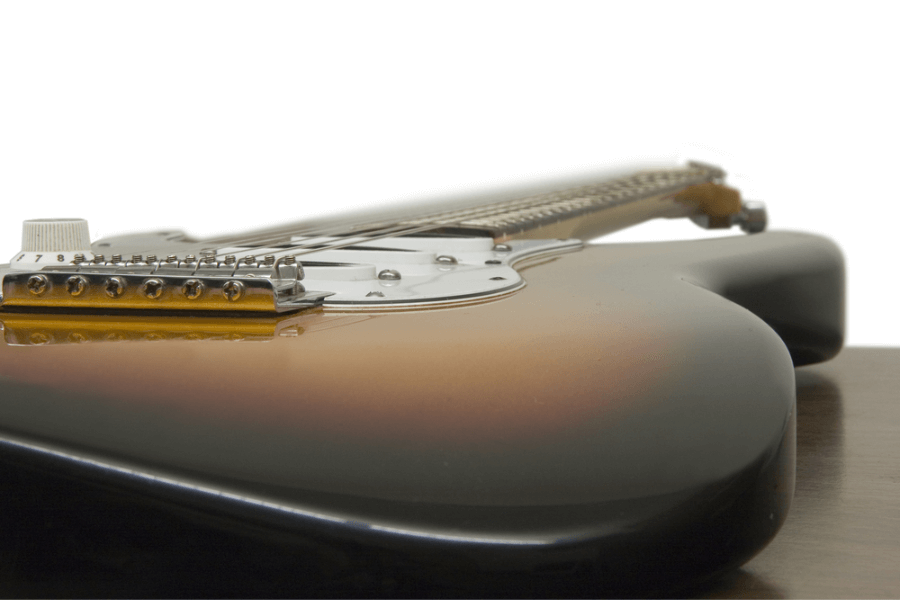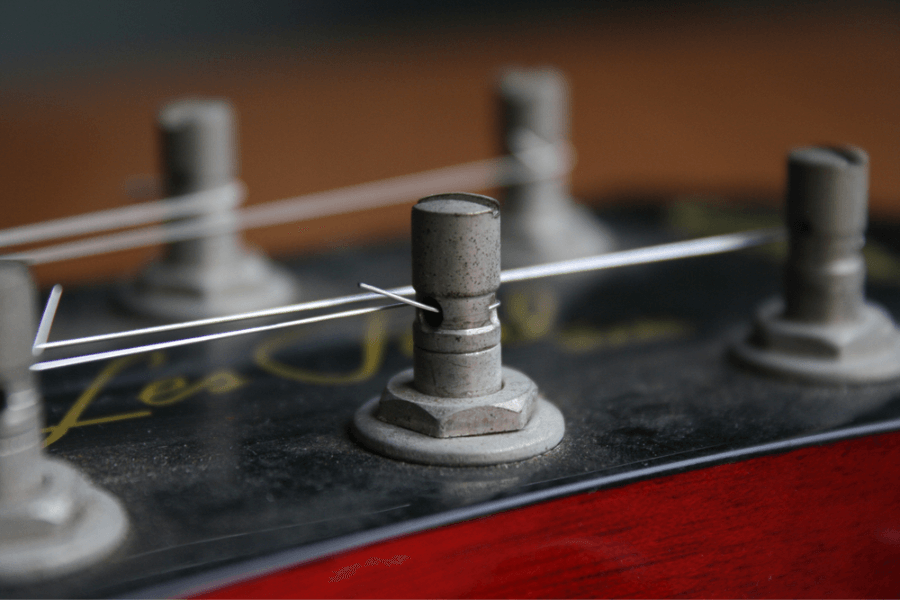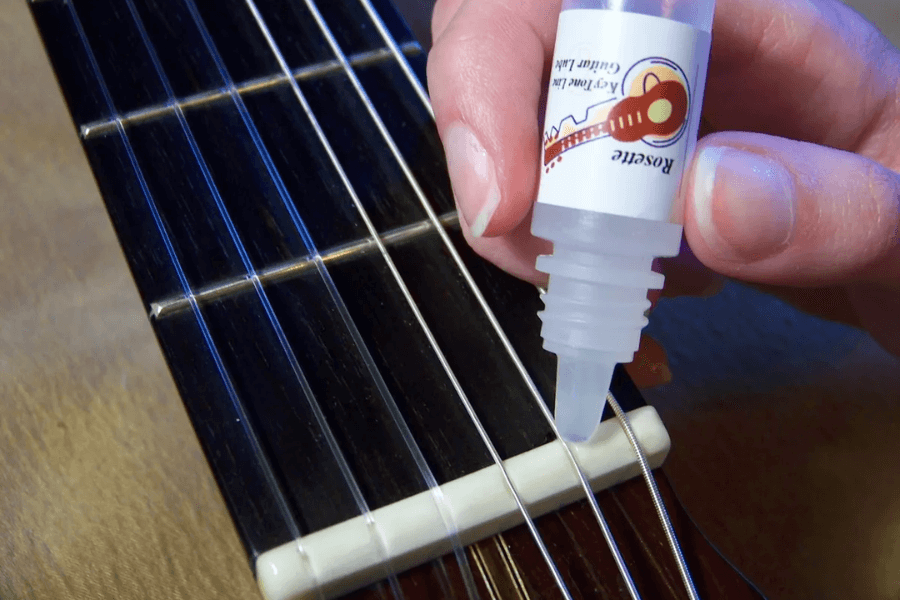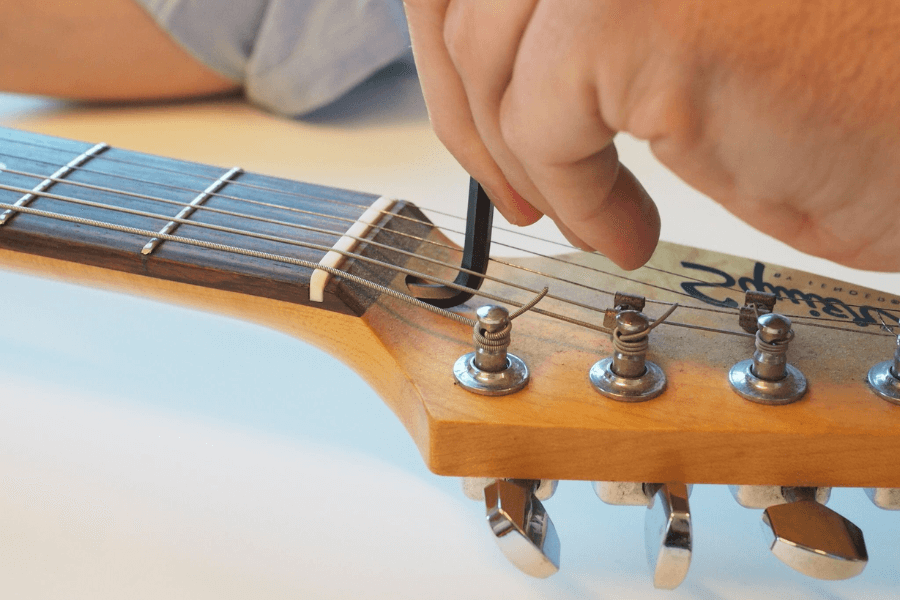If you’ve ever wanted to play an electric guitar and create the best performance but were disappointed by how it sounded?. That’s okay. Good news: you may get the perfect balance of playability with the guitar you currently have, rather than buying a new one. Enhancing their instrument’s potential without going into debt for a costly upgrade is perfect for many guitarists.

In this guide on How to Make Your Electric Guitar Play Great, Eguitarmania will walk you through five straightforward DIY tips that can dramatically uplift your guitar’s performance. Remember, the key is patience and precision—small, measured adjustments are your best friends here.
Let’s find tips and tricks to make your electric guitar not just good but great!
How To Make Your Electric Guitar Play Great – The Basics
Setting up a new guitar is a comprehensive process that involves a deep understanding of how each component interacts with the others.
Setting Nut Height
The nut retains the strings and determines their height over the first few notes at the neck end of the guitar. The ideal nut height helps you play comfortably on the lower frets and tune properly. Luthiers and guitar technicians utilize feeler gauges to measure the string’s bottom to first fret.
From 0.010 inches for the high E string to 0.020 inches for the low E string, the gap should increase. Fender recommends a nut hole deep enough to place the strings slightly above the first fret but not so deep that they buzz when the instrument is open.
String Gauge changes
The appropriate string size may change how a guitar sounds and feels. For his deep, powerful tone, Stevie Ray Vaughan employed heavy gauge strings (.013 to.058) and strong fingers.
However, Billy Gibbons of ZZ Top uses small gauge strings (the high E string is.007) for easy bending and playing. Make sure the nut slots are broad enough for thicker strings when changing sizes, particularly to a heavy gauge. If not, a pro may enlarge the slots.
Tremolo angle changes
A correctly configured tremolo system helps you create pitch-bending and vibration effects without sacrificing tune stability. Adjust the tremolo to float directly to the guitar body. This allows for pitch adjustment.
Eric Clapton installs his Fender Stratocaster tremolo bridge 1/8 inch above the body. Lowering the tremolo arm allows him to bend notes. Based on tremolo arm tension and bridge angle, tighten or loosen the guitar’s back cavity tremolo springs to achieve this equilibrium.
Setting up Truss Rod
The neck’s right curvature depends on changing the truss rod. Too straight or too bowed a neck might generate fret chatter or hard to play action. Many guitar manufacturers include truss rod setting instructions.
Gibson recommends a neck relief of.010 inches at the 7th fret when holding down the first and final frets. After making modest quarter-turn tweaks to the truss rod, let the neck settle for a few hours before examining it and making any required adjustments.
Changes to pickups
For consistent loudness across all strings and the sound you prefer, adjust the pickup height. Metallica’s James Hetfield lowers his pickups for a tighter, more defined metal tone, whereas John Frusciante elevates them for a harder, more aggressive assault.
When raising the pickups, start low and steadily increase them while playing until you have the sound you desire. Start by sliding the high E string 1/16th inch away from the strings and the low E string 3/32nd inch away with humbuckers. From there, make your desired modifications.

Why Choose Locking Tuners?
These specialized tuners are designed with a mechanism that locks the string in place. Locking tuners have become a popular choice for guitarists across all genres, offering a range of benefits.
Benefits of using locking tuners
- Reduced String Slippage: the locking mechanism holds the string firmly in place, reducing the risk of slippage, especially when performing bends or using vibrato.
- Enhanced Tuning Stability: Locking tuners clamp the string in place, minimizing slippage and ensuring the guitar stays in tune longer.
- Faster String Changes: Instead of winding the string around the post multiple times, a guitarist can simply thread the string through the post, lock it, and tune.
Overall, locking tuners have several advantages that make them a popular choice among musicians. As a result of better tuning stability, faster string changes, and easier handling with tremolo systems, locking tuners can make playing the guitar a lot more fun.
Essential Tools and Tips for Guitar Setup
In the world of electric guitar setup, the importance of choosing the right tools cannot be overstated. Every choice has a profound impact on the instrument’s performance and longevity.
Beginning with the Right String Gauge
The string size, or how thick the strings are, is very important to both how easy it is to play and how good the sound is.
Heavy gauge strings make a fuller, more powerful tone, and jazz, blues, and rock musicians often choose them for their strong sound. But to tune and bend notes, you have to put more pressure on your fingers, which can be hard for beginners or players with a light touch.
Lighter strings, on the other hand, are easier to play and great for fast leads and complex fingerpicking, but they might not have the same depth and stamina as heavy strings.
Lubrication: The Secret to Whip-Sharp Performance
When maintaining a guitar, lubrication is often forgotten, but it is very important for making sure the instrument works at its best. The nut, the bridge saddles, and the tuning machine gears are important places to grease.

Using the right lubricant lowers friction, which lets the strings run easily over the nut and saddles. This is important for keeping the tuning stable and stopping strings from breaking.
Graphite powder or specially made guitar lubricants like “Nut Sauce” are often used to keep these contact points smooth. A small bit of oil on the bridge saddles and nut holes can help with tuning and keep the strings from getting stuck. This is especially important when using tremolo systems or strong bending methods. Also, greasing the gears on the tuning machine can make tuning faster and more accurate, which can make the instrument easier to play and last longer.
The Neck Needs Time to Adjust to New String Gauges
It’s important to give the neck time to get used to the new tension levels after putting on a new set of strings of a different size. It might take a few hours or a few days.
The guitar should be tuned to pitch and kept somewhere safe during this time, so the wood has time to settle. If you try to make more changes before the neck has fully adjusted, you might make bad setup choices that could hurt the instrument.
Choosing the right tools for guitar maintenance is important for both playing well and keeping the instrument in good shape. This includes the strings that make the music and the oils that keep everything running smoothly. By paying attention to these details, players can ensure their guitars not only play beautifully but also stand the test of time.
Advanced Setup Techniques
Two crucial aspects of this process involve adjusting the tremolo angle and achieving the perfect nut height. Understanding and applying these techniques can transform a good guitar into a great one, providing a more satisfying playing experience.
Personalizing Tremolo Angle For improved playability
- Tune the Guitar: This ensures that the adjustments are made under the string tension you’ll typically be playing under.
- Check the Current Angle: Ideally, for most Stratocaster-style tremolos, the bridge plate should be parallel to the body.
- Adjust the Spring Tension: Flip the guitar over and access the tremolo spring cavity on the back.
Achieving Perfect Nut Height
The nut height plays a critical role in the guitar’s playability and intonation, particularly in the lower frets.

Changing nut height properly:
- Current Action at First Fret: Check the string’s bottom to first fret distance using a feeler gauge. Shows how active the first fret is. High E and low E strings on electric guitars are tuned at 0.015 and 0.022 inches, respectively.
- Nut Slot Change: File high holes using string-width nut files. File in the headstock direction at the appropriate angle to break the string over the nut. When the nut is too low, fill it with super glue and baking soda or replace it.
- Buzzing and Tuning Stability: Rectune the guitar and play each string open and the first few notes to check for buzzing and stable tuning. Avoid getting strings hooked on the nut, which may affect tuning.
Final Thought
Finally, if you want to play your electric guitar well, it’s not enough to have the right gear or learn complicated methods. You also need to pay attention to the little things that add up to a better playing experience. Follow these tips and learn what your guitar needs. You can make even a simple guitar into a one-of-a-kind piece that feels like an extension of yourself.









